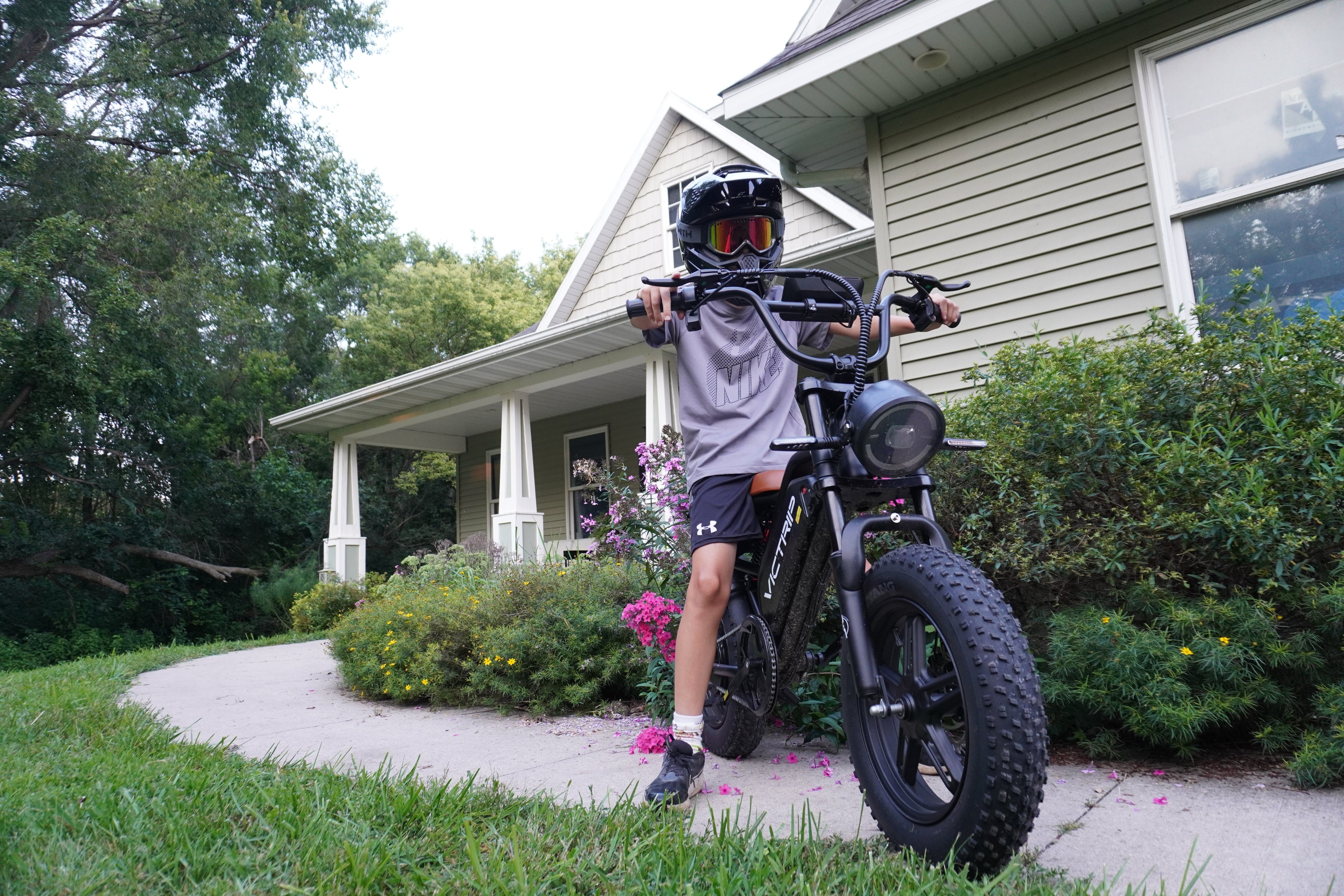
EBike vs Electric Scooter: What’s Legal and Practical in the UK? is the question many commuters, students, and urban dwellers ask when weighing micromobility options. This article explains the legal framework, the practical differences between electric bicycles (e-bikes) and electric scooters (e-scooters), and gives clear recommendations so you can choose the safest and most lawful option for your use case. Throughout I reference official UK guidance and recent developments in trial programs so you can rely on accurate, up-to-date information.
What counts as an EBike in UK law (EAPC)?
In the UK, many e-bikes are legally classed as Electrically Assisted Pedal Cycles (EAPCs). For a bike to be an EAPC it must meet specific criteria: it must have pedals which can propel it; the electric motor’s maximum continuous rated power must not exceed 250 watts; and the motor must cut out at 15.5 mph (25 km/h) so that above that speed it behaves like a conventional bike. EAPCs that meet these rules are treated like bicycles for the purposes of licensing, tax, and insurance — no registration, tax, MOT or licence is required for compliant models.
EAPC: permitted uses and exemptions
If your e-bike is a compliant EAPC:
-
You can ride on roads, cycle lanes and most shared paths where conventional bikes are allowed.
-
Minimum riding age is 14.
-
You do not need vehicle tax, registration, or insurance (although many riders choose to take out third-party or theft insurance).
-
EAPCs with additional functions (e.g., a throttle that propels above 15.5 mph or an “off-road mode” that bypasses the cut-off) may be classed as motor vehicles and lose EAPC status — meaning they would then require registration, insurance and a driving licence.
What counts as an electric scooter (e-scooter) legally?
In contrast, private, privately-owned e-scooters are generally illegal to use on public roads, pavements, cycle lanes and parks in Great Britain. The Road Traffic Act and associated guidance treat most privately-purchased e-scooters as motor vehicles unless they are specifically permitted; because they usually don’t meet vehicle safety and emissions standards, they cannot be used publicly. Riding one in public can lead to fines, penalty points and seizure of the device. You can, however, ride a private e-scooter on private land with the landowner’s permission.
Rental e-scooter rules and trials
The one major exception is rental e-scooters operating under government-sanctioned local trials. These rental schemes are permitted because local authorities and operators meet conditions set by the Department for Transport (DfT), such as insurance, data collection, rider education and speed restrictions. To ride a rental e-scooter you typically must have at least a provisional driving licence and comply with local rules (helmet advice, speed zones, and parking rules). The government has continued to extend and evaluate e-scooter trials while it decides on permanent legislation.
Technical differences: power, speed, throttle vs pedal assist
E-bikes (as EAPCs) are pedal-assisted: the motor assists only while you pedal and cuts out above 15.5 mph. Many e-bikes also include a throttle, but a throttle that propels the bike past EAPC limits will change its legal status. Motors are capped at 250 W under EAPC rules.
E-scooters are typically throttle-driven: the rider stands and engages the motor directly. Private e-scooters often exceed EAPC-like speed and power limits and lack pedals, so they cannot be classified as bicycles. Rental e-scooters in trials are engineered and limited to comply with local trial rules (often with a max speed of 12.5 mph/20 km/h or lower in pedestrian areas). The mechanical differences lead to distinct riding behaviours: e-scooters are less stable at speed, have smaller wheels (more affected by potholes), and usually offer less protective framing than a bicycle.
Practical comparison: commuting, storage, cost, range
Commuting and route suitability
-
E-bike: Better for longer commutes and routes with varied surfaces. Pedal assistance makes hills, longer distances and carrying cargo easier. Allowed everywhere bicycles are allowed.
-
E-scooter (private): Legally limited to private land — so for most urban commuters it’s not lawful. Rental e-scooters can be used where trials are active and are handy for short last-mile trips.
Storage and portability
-
E-bike: Bulkier; folding e-bikes are available if portability is essential.
-
E-scooter: Generally lighter and more compact; easier to carry into lifts or store in small apartments (but remember legal use constraints).
Cost and maintenance
-
E-bike: Higher upfront cost for good quality models; battery replacements and maintenance costs are similar to bikes but may be pricier for hub gear or mid-drive motors.
-
E-scooter: Cheaper entry models available; premium scooters can be expensive. Maintenance is focused on small wheels, battery and brake systems.
Range and usability
-
E-bike: Typical ranges of 30–80 miles depending on battery and assistance setting. Useful for extended commutes.
-
E-scooter: Often shorter ranges (10–40 miles) and less comfortable for long rides due to standing posture and small wheels.
Safety: real-world risks, crash stats, protective gear
Both devices present safety risks, but the nature of those risks differs:
-
E-bikes: Riders sit lower, have more control, and benefit from bicycle stability and better braking systems. However, higher assisted speeds and heavier bikes increase stopping distances and risk in collisions. Helmets, lights, high-visibility clothing and regular maintenance reduce risk.
-
E-scooters: Smaller wheels and standing posture make them more vulnerable to bumps, wet surfaces, and poor road quality. Several reports raise concerns about children and young people riding unsafe private e-scooters, and an uptick in offences linked to uninsured driving has been reported where e-scooter misuse occurs. Rental e-scooters operate under safety controls but risks remain, especially in mixed pedestrian spaces.
Recommended protective measures for both: helmet (strongly recommended for e-bikes too), high-visibility clothing, lights for low light, and obeying local rules. Consider additional training or a short course if you’re new to powered micromobility.

Insurance, licensing, and legal penalties
-
E-bikes (EAPC): No mandatory vehicle insurance or driving licence required for compliant models, but theft and third-party insurance products exist and are often advisable.
-
Private e-scooters: Using them on public roads without the required vehicle status exposes riders to fines, penalty points, and seizure. Insurance is effectively impossible to obtain for illegal use because the vehicle is not legally permitted on the road.
-
Rental e-scooters: Operators typically provide insurance and ensure legal compliance as part of trial conditions; riders may still need to hold a driving licence (provisional or full) depending on local rules.
Local police forces can seize non-compliant devices, and drivers caught using illegal e-scooters may face fixed penalties and driving licence points. Always check local signage and trial terms.
Where you may legally ride each device
-
E-bike (EAPC): Roads, cycle lanes, and many shared cycleways — anywhere a conventional bicycle is permitted.
-
Private e-scooter: Only on private land with landowner permission; not allowed on public roads, pavements, parks or cycle lanes.
-
Rental e-scooter: Where local trials operate and under the operator’s rules — these schemes often have geo-fenced zones and speed restrictions.
Buying guide: what to look for (UK market specifics)
If you decide to buy an e-bike or (where lawful) an e-scooter for private-land use, check these points:
For e-bikes
-
Confirm the bike meets EAPC criteria: pedals, motor ≤250 W continuous, motor cuts out at 15.5 mph. Sellers should state EAPC compliance.
-
Look for CE/UKCA marking and manufacturer documentation.
-
Battery spec, range, weight, motor type (hub vs mid-drive), braking quality, and after-sales support.
For e-scooters (private use on private land only)
-
Check build quality, braking, lights, suspension and whether the manufacturer provides clear safety information. Remember private e-scooters cannot be used on public highways.
Always ask sellers for compliance documentation and keep receipts and user manuals.
How local authorities and trials affect availability
Local councils control whether rental trials operate in their area and set conditions (speed limits, parking rules). The DfT has, over time, extended and refined trials to collect more evidence before establishing permanent rules — a process that has continued through 2024–2025. If you live in an area running a trial, rental e-scooters can be a legal and practical option for short trips; otherwise, private e-scooters remain off-limits in public spaces.
Recommendations by use case
-
Commuting longer than 5 km / mixed terrain: Choose a compliant e-bike. It’s legal, comfortable, and efficient for longer rides and hills.
-
Short last-mile trips in a city with a trial: A rental e-scooter can be convenient where permitted. Use the operator’s app, wear safety kit and obey local rules.
-
Small apartment, infrequent short trips on private land: A compact e-scooter could make sense — but remember public use is illegal unless part of a trial.
-
Budget and storage constraints: Folding e-bikes are more expensive but more versatile; small scooters are cheap but legally constrained in public.
Environmental and social considerations
Micromobility can reduce car journeys and emissions, but responsible integration matters. E-bikes often replace car trips; rental e-scooter schemes can reduce short car or taxi rides when implemented with safety in mind. Conversely, uncontrolled use of illegal private e-scooters can increase pedestrian conflicts and enforcement burdens. Local regulation and rider education are critical to maximize the environmental benefits while minimizing safety and social friction.
FAQs
Are all e-bikes legal to ride on UK roads?
Not necessarily. Only e-bikes that meet EAPC criteria (pedals, motor ≤250 W continuous, assistance cuts out at 15.5 mph) are treated as bicycles and are legal on roads and cycleways. Bikes with higher power or throttle modes that exceed those limits can be classed as motor vehicles and need tax, insurance and a licence.
Can I ride my privately bought e-scooter on the pavement or road?
No — private e-scooters are illegal on public roads, pavements and parks in Great Britain. Riding one publicly risks fines, licence points and seizure; private use is limited to private land with permission. Rental e-scooters in authorised local trials are an exception.
Do I need insurance for my e-bike?
For a compliant EAPC, there is no legal requirement to have motor vehicle insurance, but third-party and theft insurance for bikes is recommended. For vehicles not meeting EAPC rules, you will need vehicle insurance.
What happens if my e-bike has a throttle?
A throttle alone doesn’t automatically make a bike illegal — it depends on whether the bike still complies with EAPC limits. If the throttle allows the motor to propel the bike above 15.5 mph or the motor is >250 W continuous, it may be classed as a motor vehicle. Check manufacturer specs and compliance documents.
Conclusion
When considering EBike vs Electric Scooter: What’s Legal and Practical in the UK?, the legal position is clear: compliant e-bikes (EAPCs) offer a lawful, flexible and practical option for most commuters and riders, while private e-scooters are effectively prohibited on public highways unless they form part of a sanctioned rental trial. If your priority is legal certainty, range, cargo capacity and year-round commuting, an EAPC e-bike is the better choice. If you live in an area with a well-run rental e-scooter trial and need quick last-mile trips, a rental e-scooter can complement public transport — but private e-scooter ownership comes with legal restrictions that limit its public usefulness. Always check local trial rules and official DfT guidance before riding, wear appropriate protective gear, and consider insurance where practical.




Share:
Are EBikes Worth the Investment in the UK?